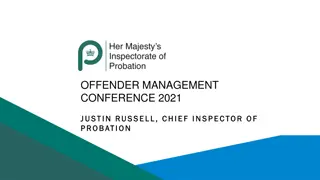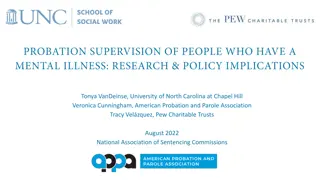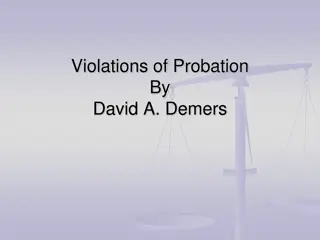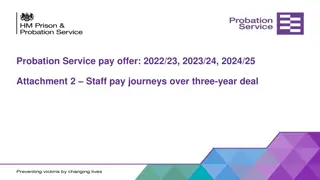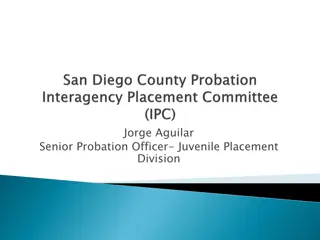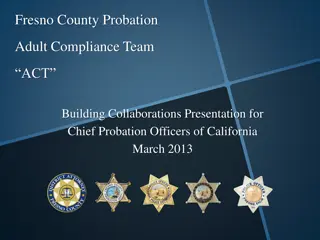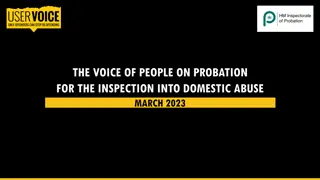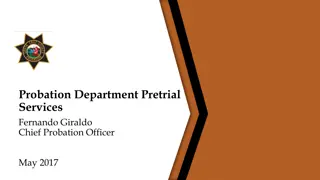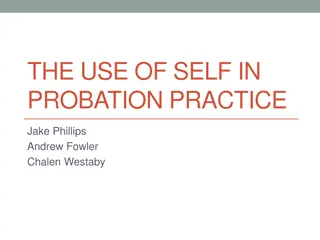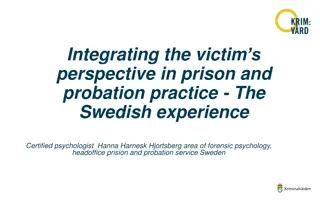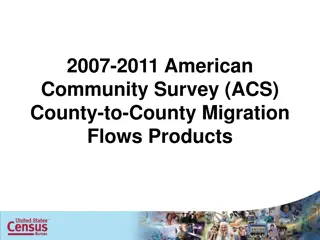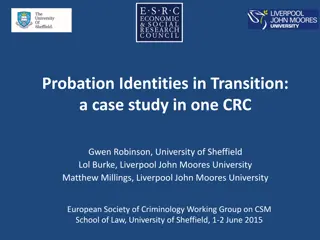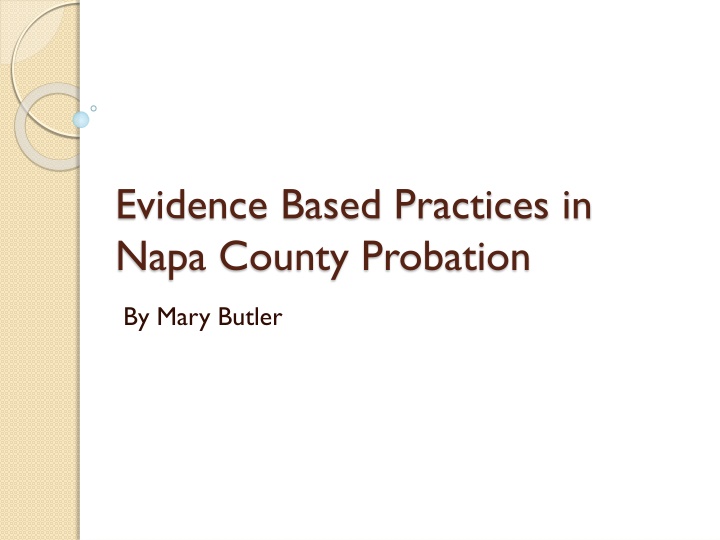
Implementing Evidence-Based Practices in Napa County Probation System
Explore the successful implementation of evidence-based practices in Napa County Probation, focusing on risk/needs assessment, cognitive behavioral programs, and the Community Corrections Service Center. Learn about interventions to reduce recidivism rates and address criminogenic needs.
Download Presentation

Please find below an Image/Link to download the presentation.
The content on the website is provided AS IS for your information and personal use only. It may not be sold, licensed, or shared on other websites without obtaining consent from the author. If you encounter any issues during the download, it is possible that the publisher has removed the file from their server.
You are allowed to download the files provided on this website for personal or commercial use, subject to the condition that they are used lawfully. All files are the property of their respective owners.
The content on the website is provided AS IS for your information and personal use only. It may not be sold, licensed, or shared on other websites without obtaining consent from the author.
E N D
Presentation Transcript
Evidence Based Practices in Napa County Probation By Mary Butler
Evidence Based Practices Definition: A progressive, organizational use of direct, current scientific evidence to guide and inform efficient and effective correctional services.
Evidence Based Practices Links between treatment and recidivism: Criminal sanctions 7% increase Inappropriate treatment 6% increase Intensive supervision Appropriate treatment 7% increase 30% reduction
Evidence Based Practices Criminogenic Needs: TOP FOUR Anti-social cognition Anti-social companions Anti-social personality Family and/or marital status
Evidence Based Practices Criminogenic Needs: THE NEXT FOUR Substance abuse Education Employment Leisure time/recreation
Evidence Based Practices WHAT WORKS: Target criminogenic needs Cognitive behavioral treatment Incorporate social learning practices Balanced approach to sanctions and interventions Therapeutic integrity Four to one principle
Napa County Probation Implemented risk/needs assessment in 2005 Trained entire criminal justice system in evidence based practices Developed cognitive behavioral facilitators Opened Community Corrections Service Center in 2009
Community Corrections Service Center Day Reporting Center Assessments Cognitive Behavioral Programs Life Skills Anger Management Substance Abuse Moral ReconationTherapy Domestic Violence
Community Corrections Service Center Intensive Program Moves at offender s own pace Includes prosocial activities Includes giving back to the community Most intensive program for high risk offenders Over 150 graduates 24% recidivism rate
Dosage Probation Pilot program with the National Institute of Corrections Three sites in the US Premise is to deliver the appropriate amount of programs for the appropriate length of time to achieve maximum results and then release offender from supervision Started in April 2016
Dosage Probation High risk offenders receive 300 hours Medium risk offenders receive 200 hours Must be supervised for minimum of one year Violent crimes, gang and sex offenders are excluded from the program Currently have 40 offenders in the program. Goal is to have 200.
Dosage Probation Seven probation officers Received additional training in delivering cognitive programming Program is voluntary to clients Incentive based Accountability crucial to success of program Additional support to staff with coaching and monitoring of client contact


